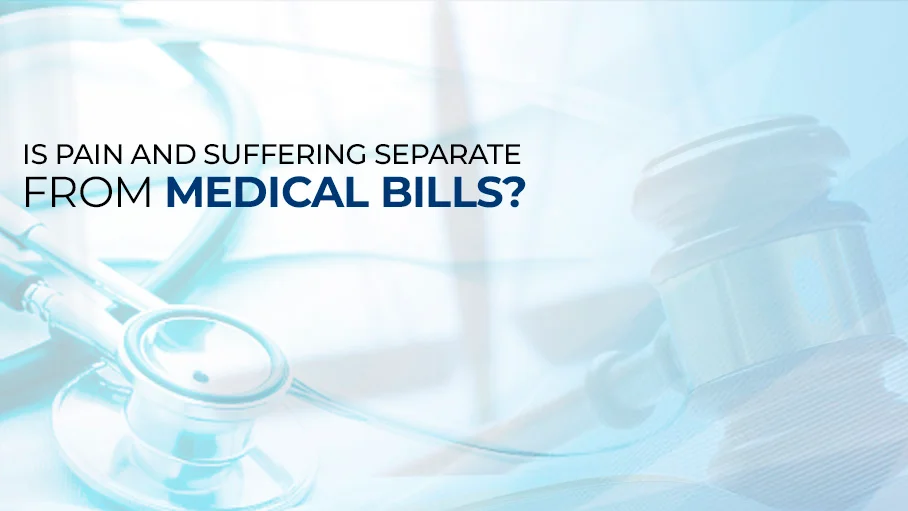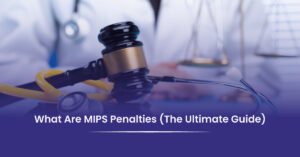Introduction
Pain and suffering are critical components of personal injury cases, encompassing the physical and emotional distress experienced by an individual due to an injury. Medical bills, on the other hand, represent the financial burden incurred for treating the injury. While these two factors may appear distinct, they are often closely related and play a significant role in determining the compensation awarded to the injured party.
Understanding the relationship between pain and suffering and medical bills is essential for those involved in personal injury cases, as it can impact the outcome and the amount of compensation awarded. Is pain and suffering separate from medical bills in various personal injury situation? or does pain and suffering include medical bills? Let’s get an insight in this article.
What are pain and suffering?
Pain and suffering refer to the physical and emotional distress caused by an injury. Pain is the physical discomfort resulting from the injury, while suffering includes the accompanying mental and emotional distress. Pain and suffering can result from various personal injuries, such as car accidents, slip and fall accidents, and medical malpractice cases.
How are medical bills related to pain and suffering?
Medical bills and pain and suffering can be related in several ways in personal injury cases.
When a person is injured due to the negligence of another party, they may seek medical treatment to address their injuries. Medical bills are the actual costs of this treatment, such as doctor’s fees, hospital bills, rehabilitation costs, and medication expenses.
In many cases, the number of medical bills incurred by the injured party can be used as evidence of the severity of their injuries. For example, if a person incurs high medical bills due to a serious injury, this can indicate that the injury was severe and required extensive treatment. This, in turn, can support the argument that the injured party suffered significant pain and suffering due to the injury.
Similarly, if an injury causes significant pain and suffering, the injured party may require extensive medical treatment to address the injury and alleviate their symptoms. This can result in high medical bills. The number of medical bills incurred can serve as evidence of the extent of the pain and suffering experienced by the injured party.
However, it is essential to note that medical bills do not necessarily reflect the full extent of the pain and suffering experienced by the injured party. In some cases, an injury may cause significant pain and suffering without incurring high medical bills. For example, a person may suffer from emotional distress or loss of enjoyment of life due to an injury, but these damages may not result in significant medical expenses.
In personal injury cases, it is essential to consider medical bills and pain and suffering to arrive at a fair and accurate compensation amount for the injured party. An experienced personal injury attorney can help gather and present evidence of both factors to build a strong case for compensation on behalf of the injured party.
The relationship between pain and suffering and medical bills in different types of personal injury cases
Car accidents
In car accident cases, the severity of injuries can vary widely depending on the circumstances of the accident. For example, a minor fender bender may result in little or no medical bills but may still be because some pain and suffering for those involved. On the other hand, a severe collision may result in significant medical bills and substantial pain and suffering for the injured parties.
Slip and fall accidents
In slip and fall cases, the injuries sustained by the injured party can range from minor to severe. For example, a slip and fall on a wet floor may result in minor injuries, while a fall from a height may result in serious injuries requiring extensive medical treatment.
The medical bills incurred can be used as evidence of the severity of the injuries and the extent of the pain and suffering experienced by the injured party.
Medical malpractice
In cases involving medical malpractice, the injuries sustained by the injured party are often directly related to the medical treatment received. As a result, medical bills can play a significant role in these cases, as they can be used to demonstrate the extent of the damages suffered by the injured party. Additionally, pain and suffering damages can be substantial in medical malpractice cases, as the injuries can be long-lasting and significantly impact the injured party’s quality of life.
Product liability
In product liability cases, injuries can result from a defective product or a product that was improperly labeled or marketed. Depending on the type of injury sustained, medical bills can vary widely. For example, a defective toy may cause minor injuries, while a defective medical device may result in significant medical bills and pain and suffering for the injured party.
Workplace injuries
The relationship between medical bills and pain and suffering can be complex in workplace injuries. In some cases, workers’ compensation insurance may cover medical bills but not provide compensation for pain and suffering. In other cases, a personal injury claim may be necessary to recover medical bills, pain, and suffering damages.
Overall, the relationship between pain and suffering and medical bills can vary widely depending on the specific circumstances of each case. An experienced personal injury attorney can help injured parties navigate these complexities and build a strong case for fair compensation.
Can pain and suffering be separate from medical bills in a personal injury case?
Is pain and suffering separate from medical bills?
Yes, pain and suffering can be separate from medical bills in a personal injury case. While medical bills are often used as evidence of the extent of an injury, pain and suffering damages are non-economic damages intended to compensate an injured party for the physical and emotional distress they have experienced due to their injuries
Pain and suffering damages can be awarded in addition to compensation for medical bills and are meant to address the intangible losses that a person may have experienced. These can include emotional distress, loss of enjoyment of life, mental anguish, and other types of suffering that are not directly related to financial expenses.
It is important to note that pain and suffering damages are often more challenging to quantify than medical bills, as they are subjective and can vary widely depending on the individual circumstances of each case.
However, pain and suffering damages can be significant in personal injury cases, particularly severe or long-lasting injuries.
An experienced personal injury attorney can help injured parties understand the different types of damages that may be available in a personal injury case and can work to build a strong case for fair compensation that takes into account all of the losses suffered by the injured party, including both economic and non-economic damages.
Conclusion
To get insight “is pain and suffering separate from medical bills” is crucial in personal injury cases, as they represent separate factors that can impact the compensation process. Pain and suffering encompass the physical and emotional distress an injured individual experiences, while medical bills signify the financial burden of treatment.
Although these factors can be closely related, they are separate components in a personal injury case. By acknowledging their distinct nature and seeking the guidance of an experienced attorney, injured parties can effectively navigate the legal process, build a strong case for fair compensation, and ensure that both economic and non-economic damages are considered.




